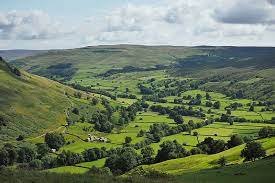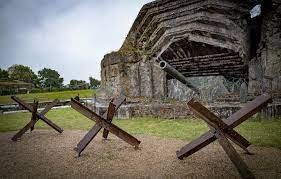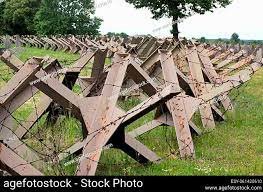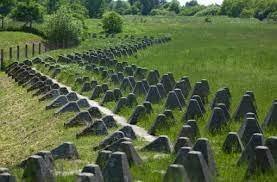
Secure your premises, Call or Text on: 07342914987
Local Business
No Call Out Fee
(See us on facebook)

TANK TRAP BARRIERS

The Purpose and Importance of Tank Trap Barriers
Tank trap barriers play a crucial role in maintaining security and protecting valuable assets. These barriers, commonly found in various regions including Yorkshire, are specifically designed to impede the movement of vehicles. Not only do they prevent unauthorized access to restricted areas, but they also contribute to ensuring public safety.

Aside from their practicality, tank trap barriers hold historical significance. In Yorkshire particularly, these obstacles have been witnesses to numerous military events dating back centuries. They symbolize the region’s resilience and reflect its strategic importance throughout history. The sight of these barricades serves as a reminder of past battles fought and won, preserving the memory of those who sacrificed their lives for the greater good.
In today’s context, tank trap barriers are not just relics of the past; they continue to fulfill a vital purpose. With increasing security threats around the world, it is more crucial than ever to maintain effective measures that deter potential attackers or intruders. Tank trap barriers serve as a visible deterrent and significantly diminish the risk posed by vehicle-borne attacks or attempts at breaching secure locations.

Moreover, tank trap barriers offer flexibility by being customizable according to specific requirements and environments. They can be employed in both static and temporary settings providing adaptability depending on security needs at different times or locations.
In conclusion, tank trap barriers not only underscore historical significance but also serve an essential function in modern times – fortifying security while preserving regional heritage. Their presence stands as a testament to humankind’s commitment towards safeguarding lives and assets against potential threats
History:
Evolution and Use of Tank Trap Barriers
Tank trap barriers have a long and fascinating history, dating back to their first recorded use in the Yorkshire Dales of England during World War II. Originally known as Dragon’s Teeth due to their tooth-like appearance, these obstacles were strategically placed in areas where tanks or vehicles might attempt to cross. Made from concrete or steel, tank trap barriers proved highly effective in stopping enemy forces from advancing. The evolution of these barriers over time has seen them become more sophisticated and versatile, with various designs implemented worldwide.

While initially used primarily for military purposes, tank trap barriers have since found new applications beyond the battlefield. In recent years, they have become popular additions to architectural and landscape design projects. These structures offer a unique blend of functionality and aesthetics, serving as both security features and visually appealing elements within public spaces. Innovations such as incorporating vegetation into the design allow tank trap barriers to seamlessly integrate with surrounding environments while providing an added layer of protection.
The captivating history of tank trap barriers illustrates humanity’s relentless pursuit of innovation in times of conflict and peace. From humble beginnings on the hillsides of Yorkshire to their modern-day embodiments across the globe, these structures continue to evolve both in form and function. Whether guarding against invading armies or enhancing urban landscapes, tank trap barriers stand as reminders that even amidst turmoil, human ingenuity can shape the world around us for better or worse
Design and Construction:
Key Features and Materials Used in Yorkshire
Tank trap barriers are a common sight in Yorkshire, serving as important elements of the region’s design and construction. These barriers are typically constructed using concrete or metal, providing a sturdy obstacle to prevent unauthorized access or protect sensitive areas. The unique design of tank trap barriers includes strategically placed ridges and grooves that make it difficult for vehicles to navigate through.

In addition to tank trap barriers, Yorkshire also showcases an extensive use of local materials in its designs. Natural stone, such as limestone and sandstone, is commonly used for building facades and landscaping projects. This not only adds a distinctive charm to the architecture but also highlights the connection between the structures and their environment.
Furthermore, timber is widely utilized in both traditional and modern designs across Yorkshire. From structural beams to decorative finishes, timber provides warmth and character to buildings while maintaining durability. Locally sourced timber is often favored for its sustainability and ability to blend seamlessly with the natural surroundings.

Together, these key features and materials contribute to making Yorkshire’s design landscape truly unique. The innovative use of tank trap barriers ensures security while preserving aesthetic appeal, while the incorporation of local materials celebrates the region’s heritage and creates harmony between architecture and nature. Whether you’re exploring cities or admiring countryside scenery in Yorkshire, be prepared to be captivated by these distinct design elements that define the region’s architectural identity.
Applications:
Protecting Infrastructure, Military Installations, and Public Safety
Yorkshire, with its rich history and stunning landscapes, is not just known for its picturesque beauty but also for its unique design and construction techniques. One key feature that stands out in the region is the use of tank trap barriers. These imposing structures were strategically placed during World War II to prevent enemy tanks from advancing further into the country. Made of reinforced concrete or steel beams, tank traps continue to dot the Yorkshire countryside and serve as a reminder of the region’s wartime past.

When it comes to materials used in construction in Yorkshire, traditional methods often intertwine with modern innovation. Local stone, such as Yorkshire sandstone or limestone, is extensively used for both traditional and contemporary buildings. This durable material not only adds a touch of authenticity to historical architecture but also blends seamlessly with modern designs. Additionally, timber plays a significant role in Yorkshire’s construction industry, thanks to sustainably managed forests in the region. From structural components like beams and frames to decorative features like doors and windows, locally sourced timber adds warmth and character to many buildings across Yorkshire.
https://www.britannica.com/place/York-England
Overall, design and construction in Yorkshire highlight a harmonious blend of tradition and innovation. The use of tank trap barriers showcases an important aspect of local history while adding character to the landscape. Furthermore, by utilizing materials rooted in their surroundings like local stone and timber from sustainable sources, builders respect both tradition and sustainability when shaping architectural wonders throughout this captivating county.